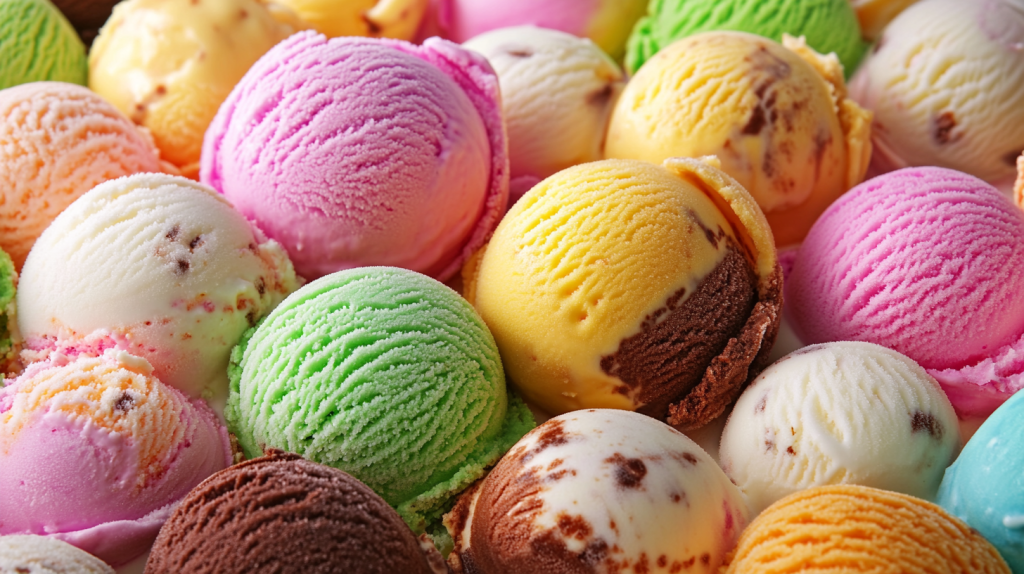Ice cream is one of those things that just exists. We eat it. We enjoy it. We might even get creative with flavors and toppings, but we don’t ever stop to wonder where it came from. Ice cream just “is”. So, being the curious soul that I am, I set off on a mission to learn more about our favorite frosty treat and uncovered loads of interesting stuff right here in Britain and across the globe.
Margaret Thatcher Helped Create Soft Serve Ice Cream
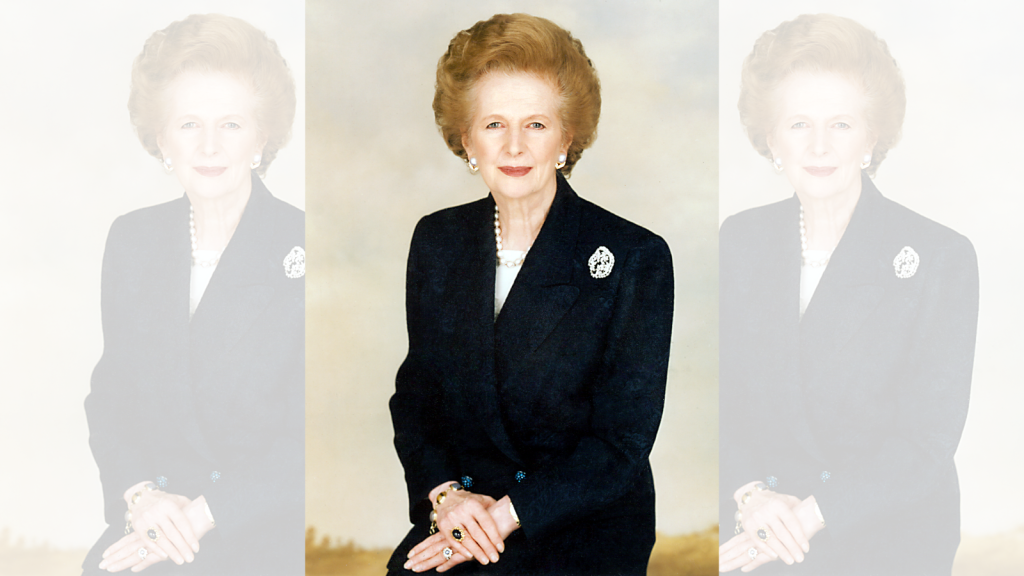
Before her time as Prime Minister, Margaret Thatcher worked as a chemist for a food company, where she helped develop a technique that added more air to ice cream. This process paved the way for the soft-serve ice cream we enjoy today. The innovation allowed manufacturers to use less cream, making production cheaper.
Cornish Ice Cream Is a Protected Food
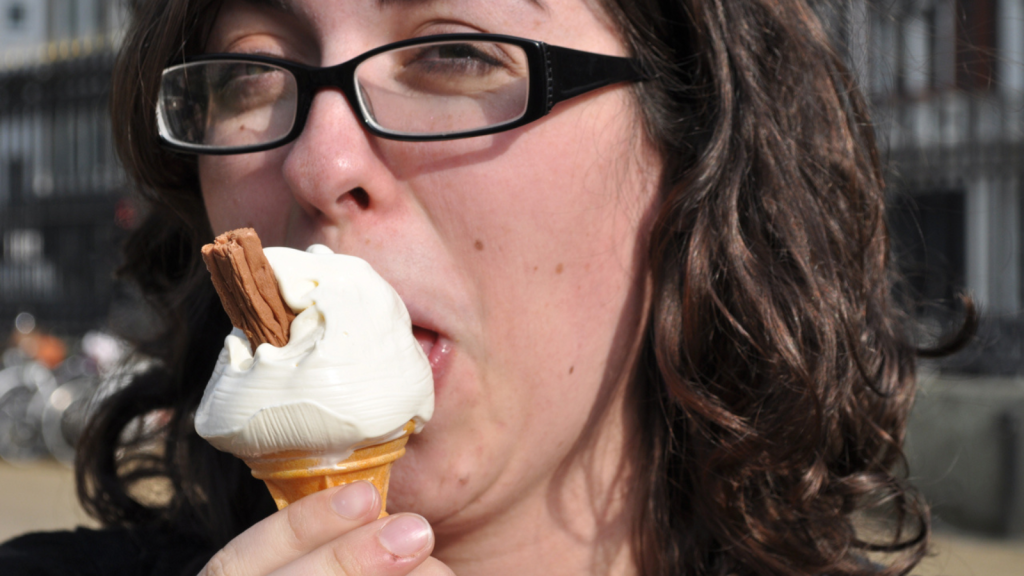
Cornish ice cream, made with fresh local dairy, is one of the U.K.’s best-loved traditional treats. In 2011, it earned Protected Geographical Indication (PGI) status from the EU, meaning only ice cream made in Cornwall using locally sourced milk and cream can be called “Cornish Ice Cream.”
The ’99 Flake Is a British Icon
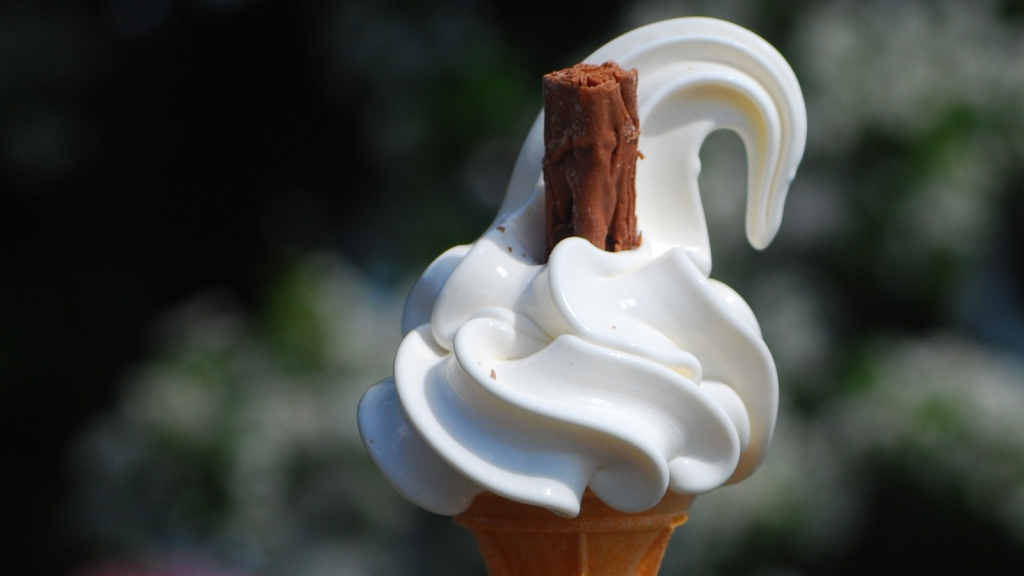
The classic British ’99 Flake, a soft-serve ice cream cone with a Cadbury Flake chocolate bar, has been around since the 1920s. Despite its name, it’s unclear why it’s called a “99,” but some believe it may have referred to its original price or to a special police unit in Italy!
The Ice Cream Van Chimes Have a Legal Limit
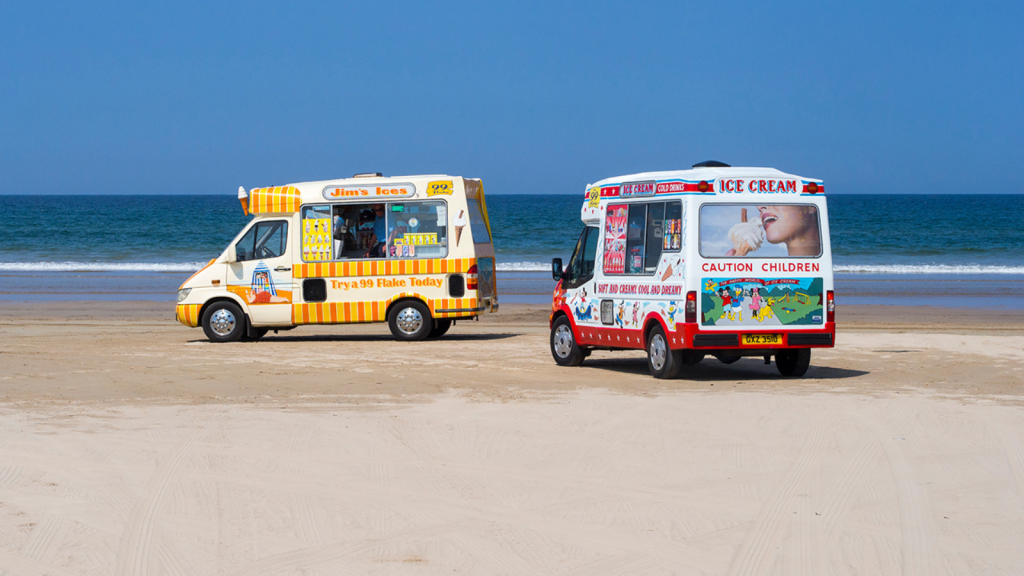
In Britain, ice cream vans are famous for their chimes, but did you know there’s a legal limit to how long the music can play? According to U.K. regulations, vans can only play their tune for 12 seconds at a time, and they must stop if they’re within 50 meters of a school.
Victorian Britain Popularized Ice Cream for the Masses
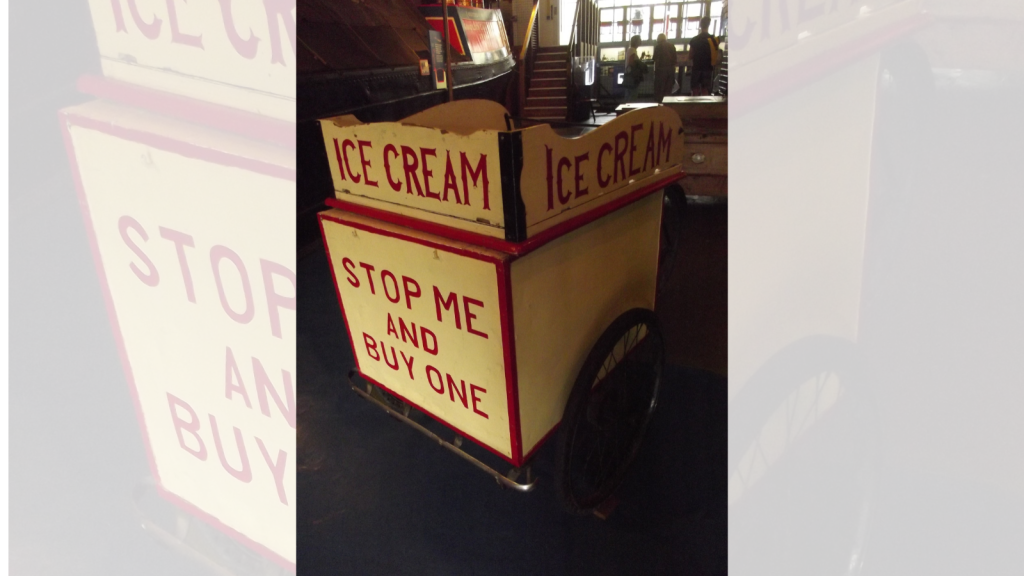
Ice cream in the U.K. became widely available during the Victorian era, thanks to Italian immigrants. They set up ice cream carts in cities like London, offering cheap scoops for just a penny. Known as “Hokey Pokey” men, these vendors helped make ice cream a working-class treat.
The Popsicle Was Accidentally Invented by an 11-Year-Old
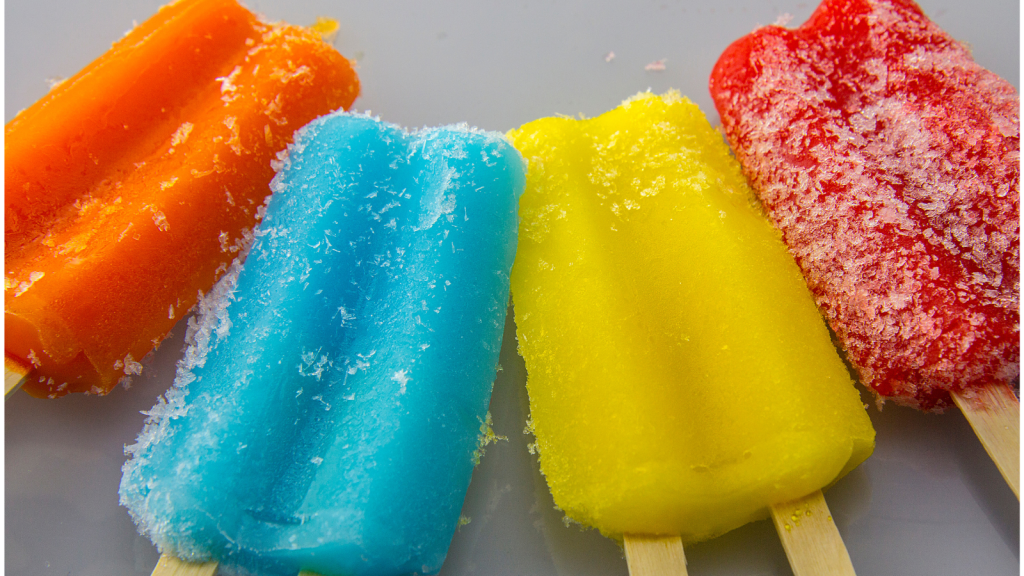
In 1905, 11-year-old Frank Epperson accidentally invented the popsicle. After leaving a cup of soda with a stirring stick outside in the cold, he returned to find it frozen—and the popsicle was born! It wasn’t until 1923 that Epperson patented his creation, giving rise to the popsicle craze.
The Ice Cream Scooper Was Invented in 1897
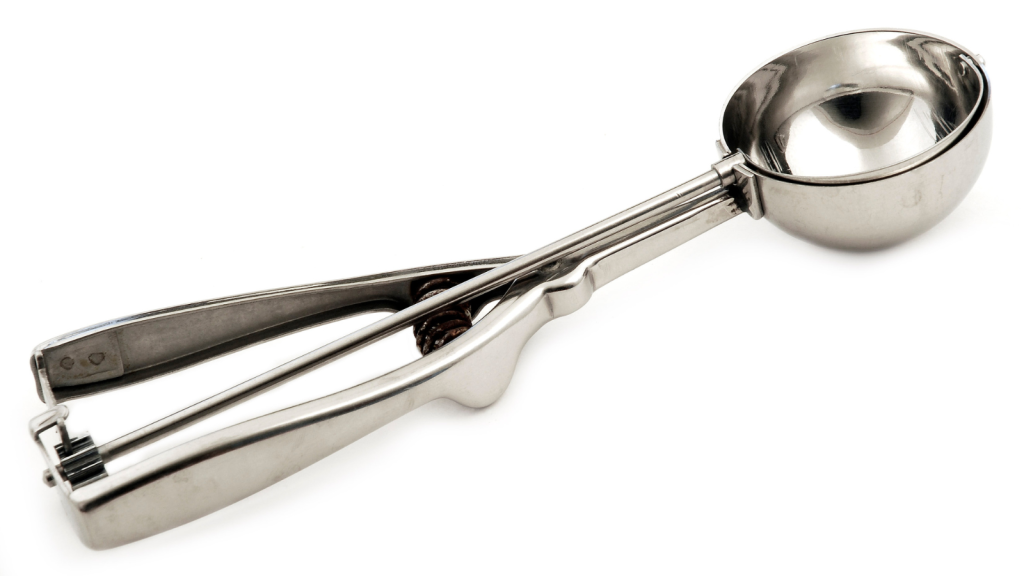
Alfred L. Cralle, an African American inventor, patented the first ice cream scooper in 1897. His design produced conical scoops, though the spherical scoop we know today came later. This tool revolutionized ice cream service, making it quicker and more efficient to serve.
Thomas Jefferson Wrote the First Ice Cream Recipe
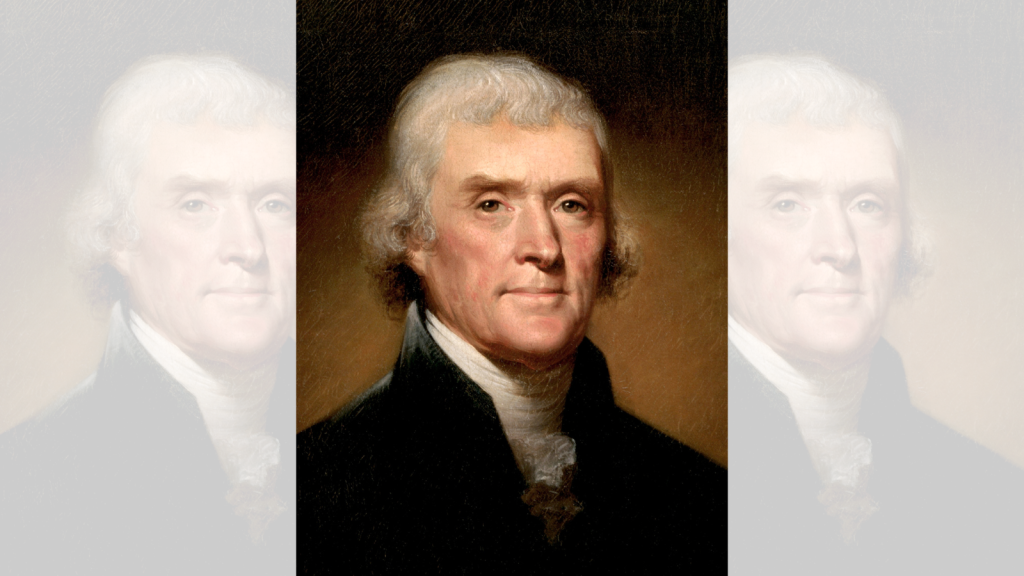
Not only was Thomas Jefferson a Founding Father, but he also played a part in popularizing ice cream in America. He wrote down the first ice cream recipe in the U.S., which likely came from his French butler, Adrien Petit. The recipe was for a vanilla ice cream that Jefferson often served at Monticello.
Paleteros Sell Unique Flavors in Mexico
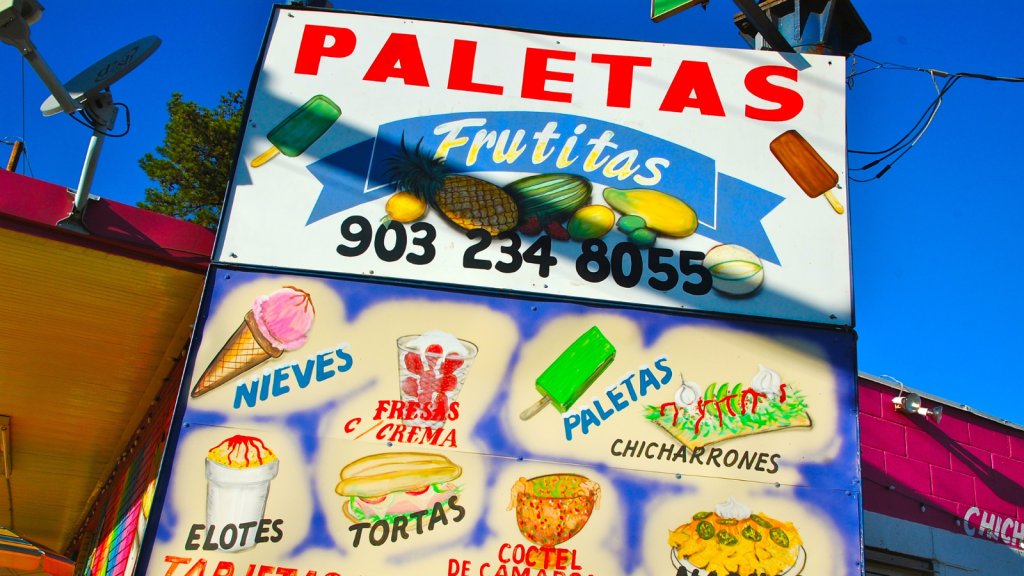
In Mexico, paleteros (ice cream vendors) sell a variety of popsicles, called paletas. These include adventurous flavors like tamarind and mango with chili, offering a bold twist on the classic frozen treat. These street vendors are a beloved part of Mexican culture, especially in the summer.
Fried Ice Cream and Baked Alaska Are Showstoppers
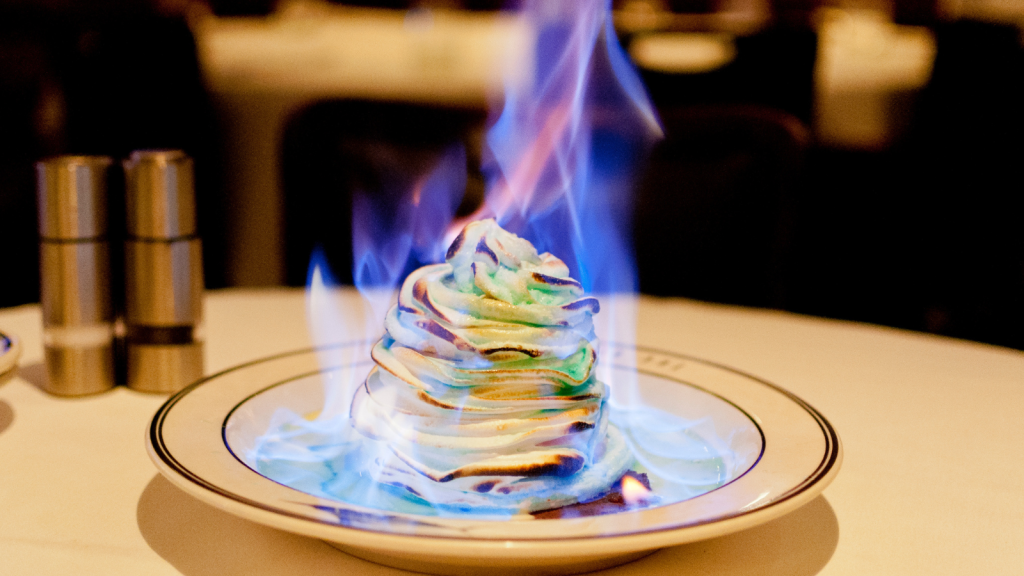
Fried ice cream, a popular dessert, is made by coating a scoop in batter and frying it. Baked Alaska, a similar indulgent treat, was invented by chef Charles Ranhofer in New Orleans in 1867. Both desserts remain favorites at high-end restaurants and continue to amaze diners with their dramatic presentations.
The Most Expensive Sundae Costs $25,000
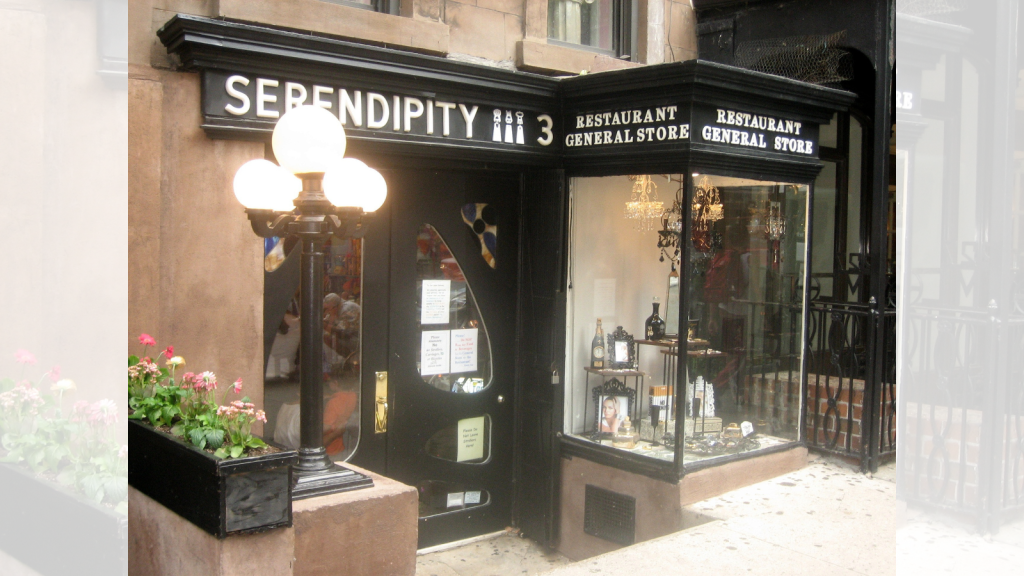
Serendipity 3 in New York sold a sundae worth $25,000 in 2007. Called the “Frozen Haute Chocolate,” it was topped with edible gold, and proceeds went to children’s charities. The sundae also included luxury ingredients like truffle shavings and rare cocoa blends.
The First Ice Cream Truck Rolled Out in the 1920s

Ohio-based confectioner Harry Burt launched the first ice cream truck fleet in the 1920s. Equipped with bells from his son’s sled, these trucks have evolved into a worldwide phenomenon with familiar tunes like “Frere Jacques” and “London Bridge is Falling Down.” Burt’s innovation helped make ice cream accessible to the masses.
Astronauts Were Not Fans of Freeze-Dried Ice Cream
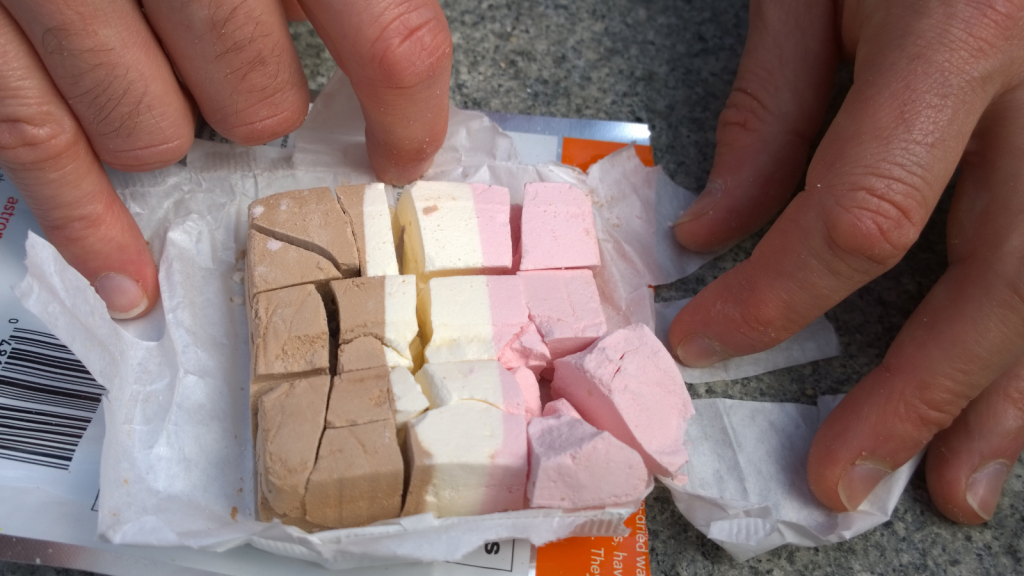
While freeze-dried ice cream was created for the Apollo missions, astronauts didn’t exactly love it. Mike Massimino famously described it as being more like “building material” than actual food. It turns out that traditional frozen treats don’t hold up too well in space.
The Largest Ice Cream Sundae Weighed 54,917 Pounds

In 1988, Palm Dairies Ltd. in Alberta, Canada, set a world record by creating an ice cream sundae that weighed 54,917 pounds (24.91 tonnes). The giant dessert required hundreds of volunteers and multiple flavors of ice cream to build.
McDonald’s Soft Serve Machines Are Famous for Breaking
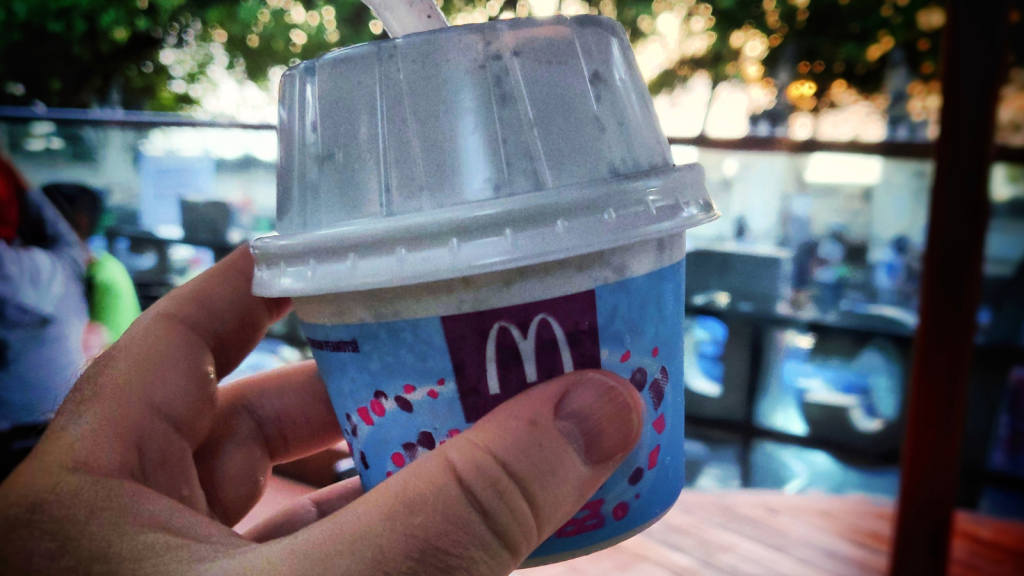
Ever get frustrated by a McDonald’s soft-serve machine being broken? You’re not alone. In fact, McBroken.com launched in 2020 to track which machines are down so you never have to miss out on your McFlurry. It’s become a cult favorite site for soft-serve lovers.
The U.S. Navy Had a Floating Ice Cream Factory

During World War II, the U.S. Navy created a barge capable of producing 10 gallons (37.9 liters) of ice cream every seven minutes. It could store up to 2,000 gallons (7,600 liters), ensuring that sailors could enjoy ice cream even at sea. This floating factory was a welcome morale booster for troops in the Pacific.
New Zealand Leads the World in Ice Cream Consumption

It’s worth repeating—New Zealand takes ice cream obsession to the next level, with an average consumption of 7.4 gallons (28 liters) per person per year, making them the top consumers globally. This small nation’s love for the frozen treat is unmatched!
South Africa Has Insect-Based Ice Cream

At Gourmet Grubb in South Africa, you can try ice cream made from “EntoMilk,” a milk alternative derived from black soldier fly larvae. Flavored with peanut butter and spices, it’s an eco-friendly option! The creators hope that insect-based dairy alternatives could be the future of sustainable food.
The Ice Cream Float Was Born in Philadelphia
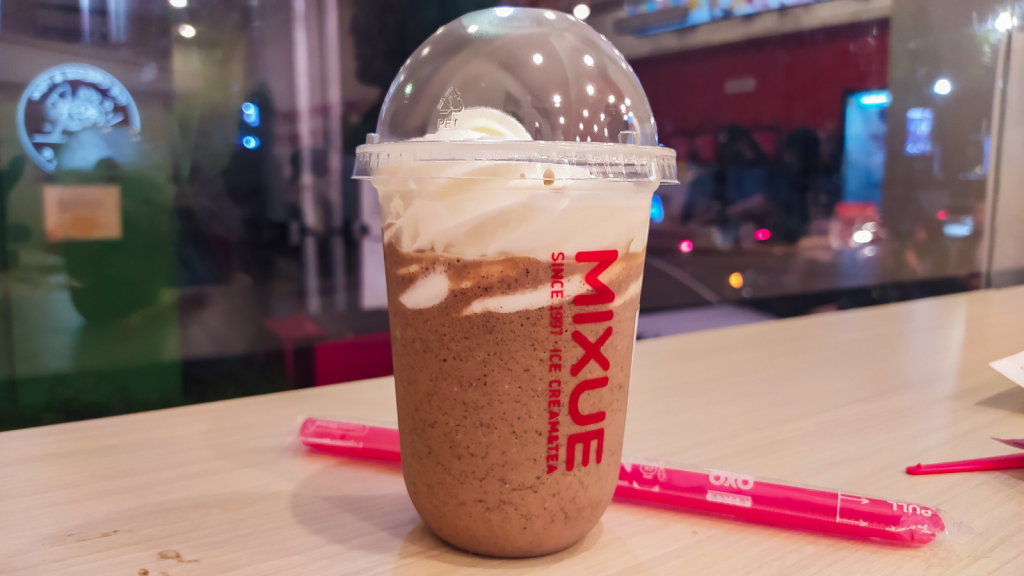
Robert Green invented the ice cream soda in 1874 in Philadelphia. After running out of ice, he used ice cream to cool drinks, giving birth to the beloved ice cream float. This mistake quickly became a summer staple across the country.
The First Ice Cream Cone Was Patented in 1903
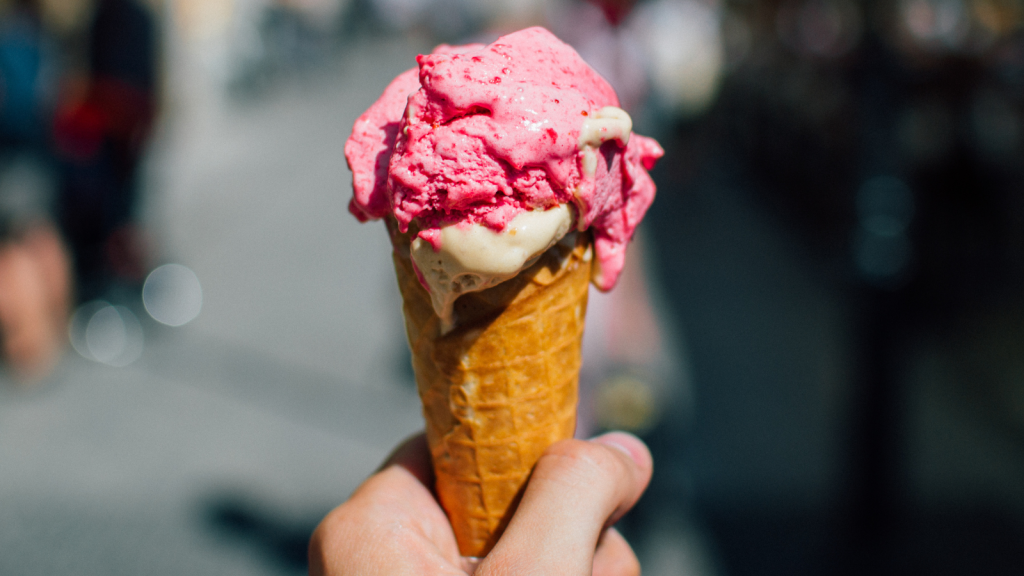
Italo Marchiony, an Italian immigrant, patented the ice cream cone in 1903. A year later, at the St. Louis World’s Fair, Ernest A. Hamwi, a Syrian immigrant, helped popularize it by serving ice cream in waffle cones. This simple invention made enjoying ice cream on the go much easier.
Brain Freeze is Real, and Here’s How to Stop It

Ever wonder why cold treats give you brain freeze? It happens when something cold touches the roof of your mouth, causing blood vessels to constrict and then rapidly dilate. Pressing your tongue to the roof of your mouth can help ease the pain. Experts also suggest sipping warm water to counter the cold sensation.
Kulfi Is Almost 500 Years Old
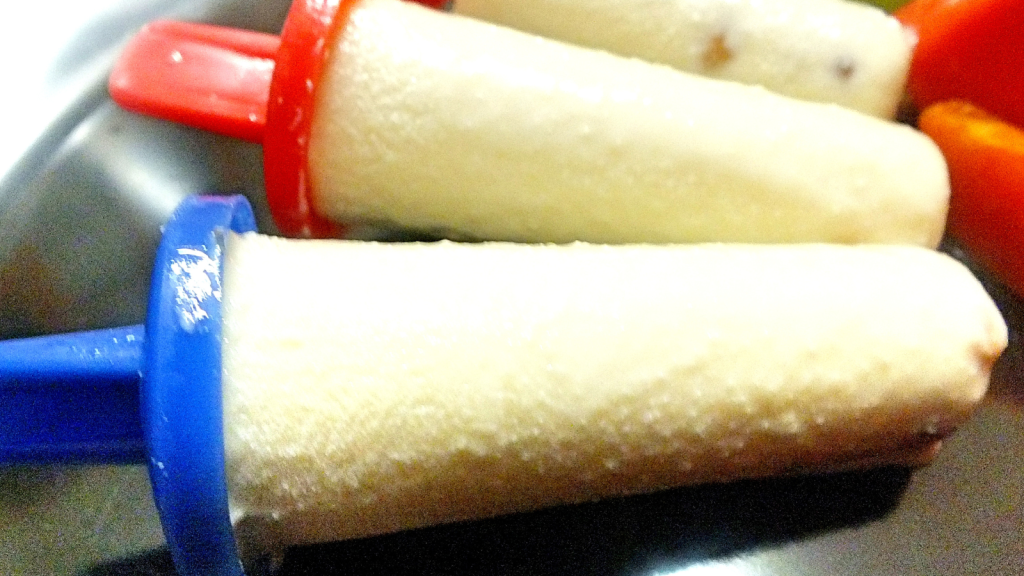
In India, the traditional frozen dessert known as kulfi dates back to the 16th century in Delhi. This dense, rich ice cream has stood the test of time for nearly 500 years! It’s still widely enjoyed today, often flavored with cardamom, saffron, and pistachios.
The Ice Cream Scooper Was Invented in 1897
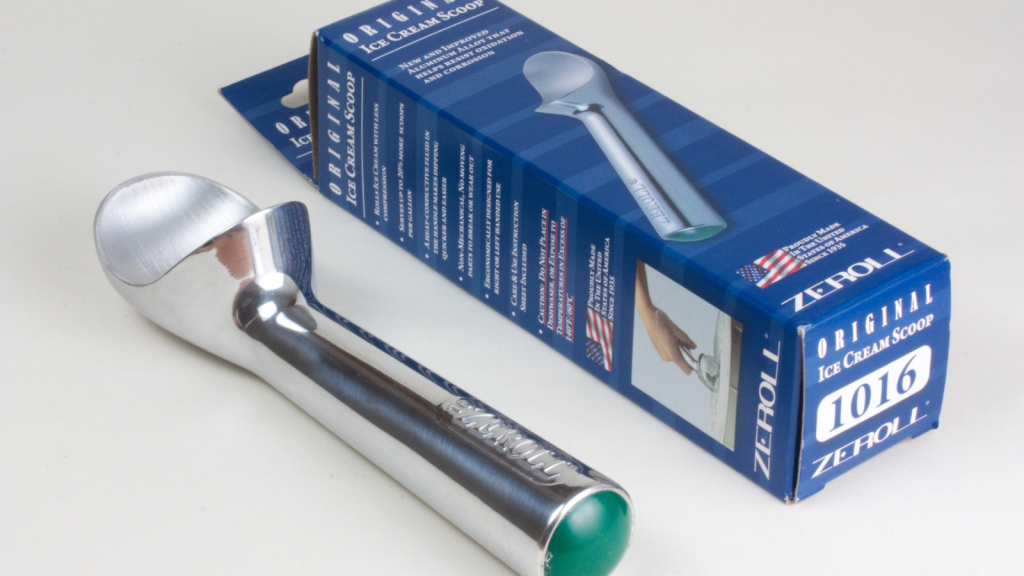
Alfred L. Cralle, an African American inventor, patented the first ice cream scooper in 1897. His design produced conical scoops, though the spherical scoop we know today came later. This tool revolutionized ice cream service, making it quicker and more efficient to serve.
Blue Laws Gave Birth to the Ice Cream Sundae
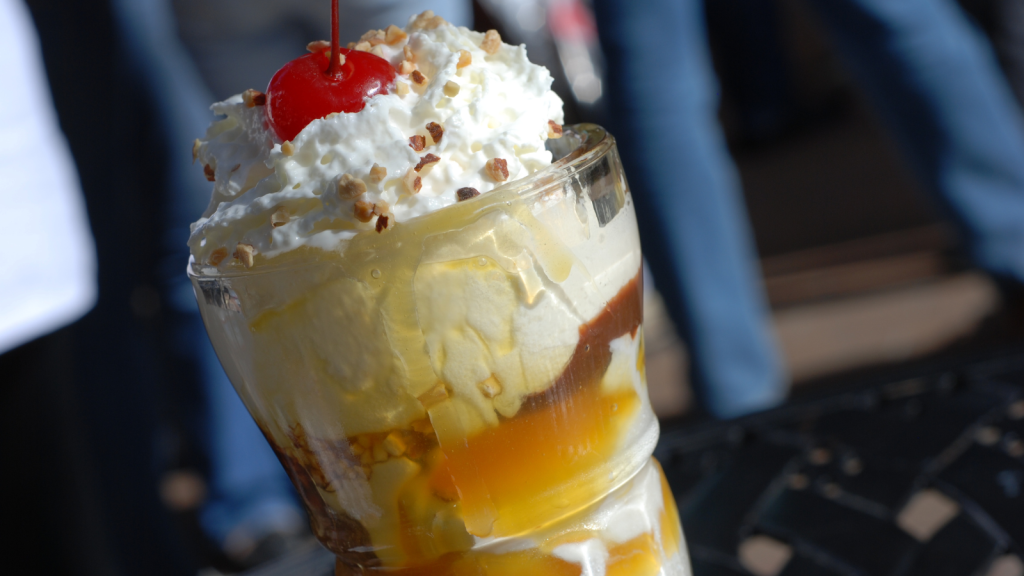
In the 1800s, religious laws prevented the sale of soda on Sundays. Soda floats were then topped with chocolate sauce instead of soda, leading to the creation of the ice cream “Sunday,” which later became known as the sundae. The name change was a subtle nod to avoid offending religious sensibilities.Ÿ
Ice Cream is Surprisingly Nutritious
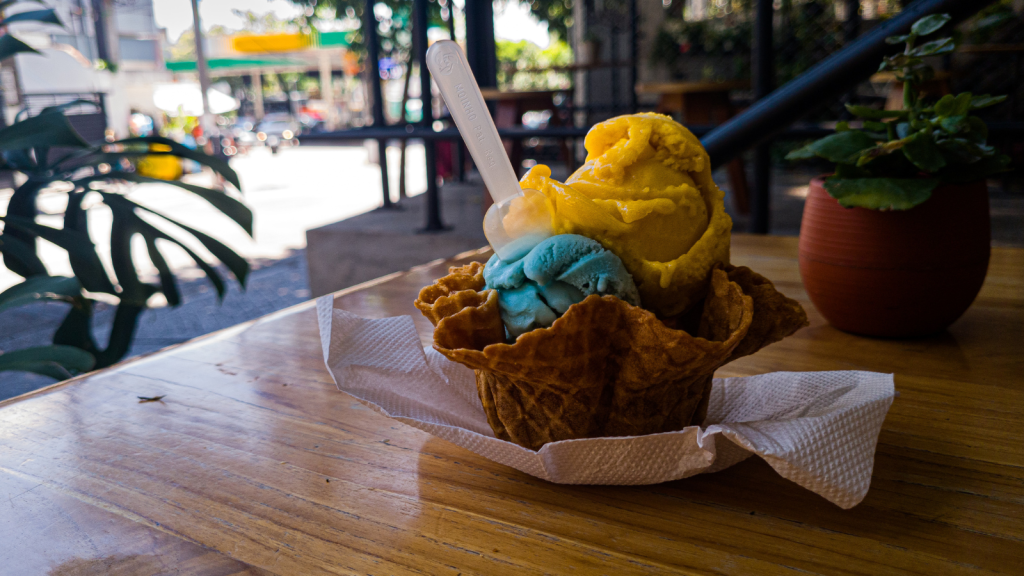
Believe it or not, ice cream contains vitamins A and B-12. While you shouldn’t trade in your veggies for a pint of ice cream, it’s a fun fact to use when you’re angling for an extra scoop! Ice cream also provides calcium, although in smaller quantities than milk or yogurt.
Thomas Jefferson Wrote the First Ice Cream Recipe
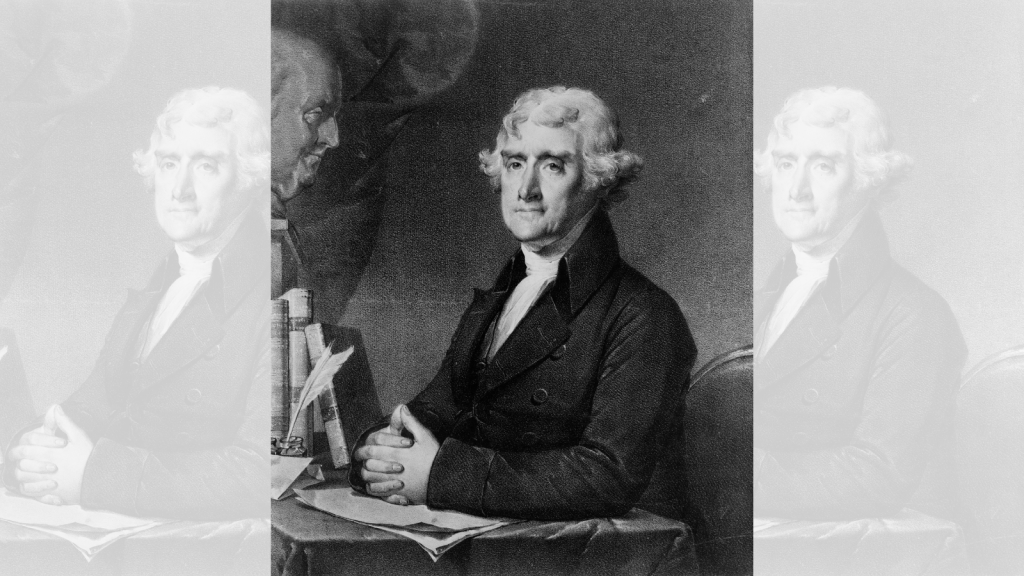
Not only was Thomas Jefferson a Founding Father, but he also played a part in popularizing ice cream in America. He wrote down the first ice cream recipe in the U.S., which likely came from his French butler, Adrien Petit. The recipe was for a vanilla ice cream that Jefferson often served at Monticello.
A WWII Pilot Made Ice Cream in Mid-Air

Commander J. Hunter Reinburg had a creative solution to the lack of ice cream during World War II. He flew his plane to high altitudes, where the freezing temperatures allowed him to make ice cream for his troops stationed in the Pacific. His method became a favorite story among servicemen at the time.
President Reagan Declared July National Ice Cream Month

In 1984, President Ronald Reagan made ice cream an official celebration by declaring July National Ice Cream Month, with the third Sunday of the month being National Ice Cream Day. So, mark your calendars for a guilt-free scoop! Reagan’s proclamation was a nod to America’s long-standing love affair with ice cream.
Black Ice Cream is an Instagram Sensation
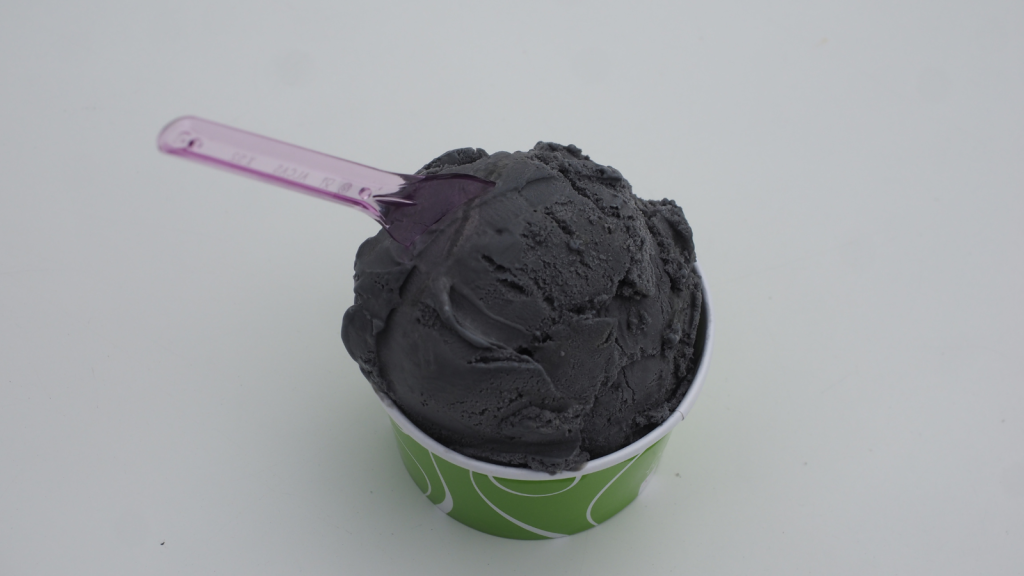
Black ice cream, with its striking color, became a social media hit. Ingredients like activated charcoal, black garlic, and even squid ink give this treat its unusual appearance. The dark shade makes for stunning visuals, but some experts warn against overconsumption of charcoal-infused foods.
America’s First Ice Cream Parlor Opened in 1790

New York City hosted the country’s first ice cream parlor in 1790. Interestingly, during Prohibition in the 1920s, ice cream parlors replaced bars as popular hangouts, offering music and social gatherings minus the booze. These parlors became crucial spaces for socializing without alcohol.
Katy Willis is a writer, master herbalist, master gardener, and certified canine nutritionist who has been writing since 2002. She’s finds joy in learning new and interesting things, and finds history, science, and nature endlessly fascinating.
